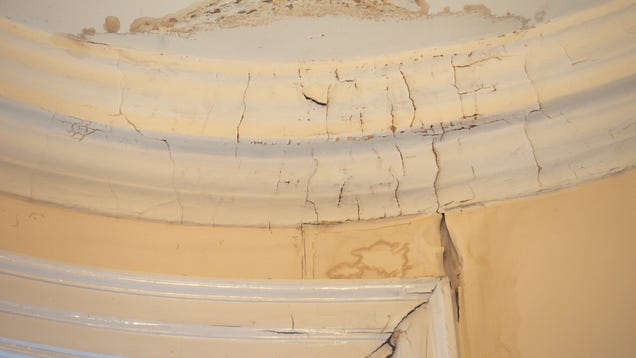
Whether you’re dutifully attending open houses looking for your next home, or have lived in the same one for decades, you should always be on the lookout for water damage. That’s because it’s more than an eyesore: Water damage is a sign of a larger problem.
And if you come across water damage while shopping for a new home—or spot an area affected by it that you had never noticed before in your longtime home—you’ll want to figure out whether it happened recently, or is a remnant of a past problem. Here’s how to tell whether water damage is new or old.
How to tell whether water damage is new or old
Determining whether water damage is recent or has been there for a while isn’t as a straightforward as you might think (unless you’re a professional), but these strategies can help:
Touch it
Put on a pair of gloves, protective eyewear, and a face mask (there may be mold present) and gently press on an area with water damage. If it feels wet, but the drywall or ceiling behind it is still firm, the damage is probably new. But if the wall or ceiling is damp and squishy or spongy, the water has had a chance to soak in, and it’s likely older damage.
Look for rings
Like a tree, the more rings an area with water damage has around it, the older it is. Also pay attention to the color of the rings: If there are a variety of colors, it’s a sign that over the years, there have been multiple incidents that caused water damage in the same place. Single dark spots without rings are typically new.
Check for mold and decay
Mold typically starts to grow on an area with water damage within 48 hours, often appearing as small gray or black specs on walls, floors, or ceilings. If the mold has had a chance to spread beyond the area directly affected by water damage, it’s probably not new.
Similarly, if you notice that parts of your home with water damage have started to decay or deteriorate, it’s a sign that at least some of it is old, and that the area has likely flooded, or been the site of standing water multiple times in the past.
How to repair you home after water damage
Depending on what you find out about the water damage in your home (or potential home), you may need to do some repair work—or hire someone to do it for you.
This is a topic Lifehacker has covered from a few different angles, including posts on everything you need to do if your home has water damage, how to repair water damage in your home (and when to panic about it), and, once the root cause is taken care of, how to get rid of water stains on your ceiling.

0 Comments :
Post a Comment